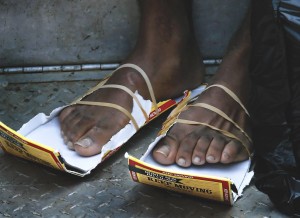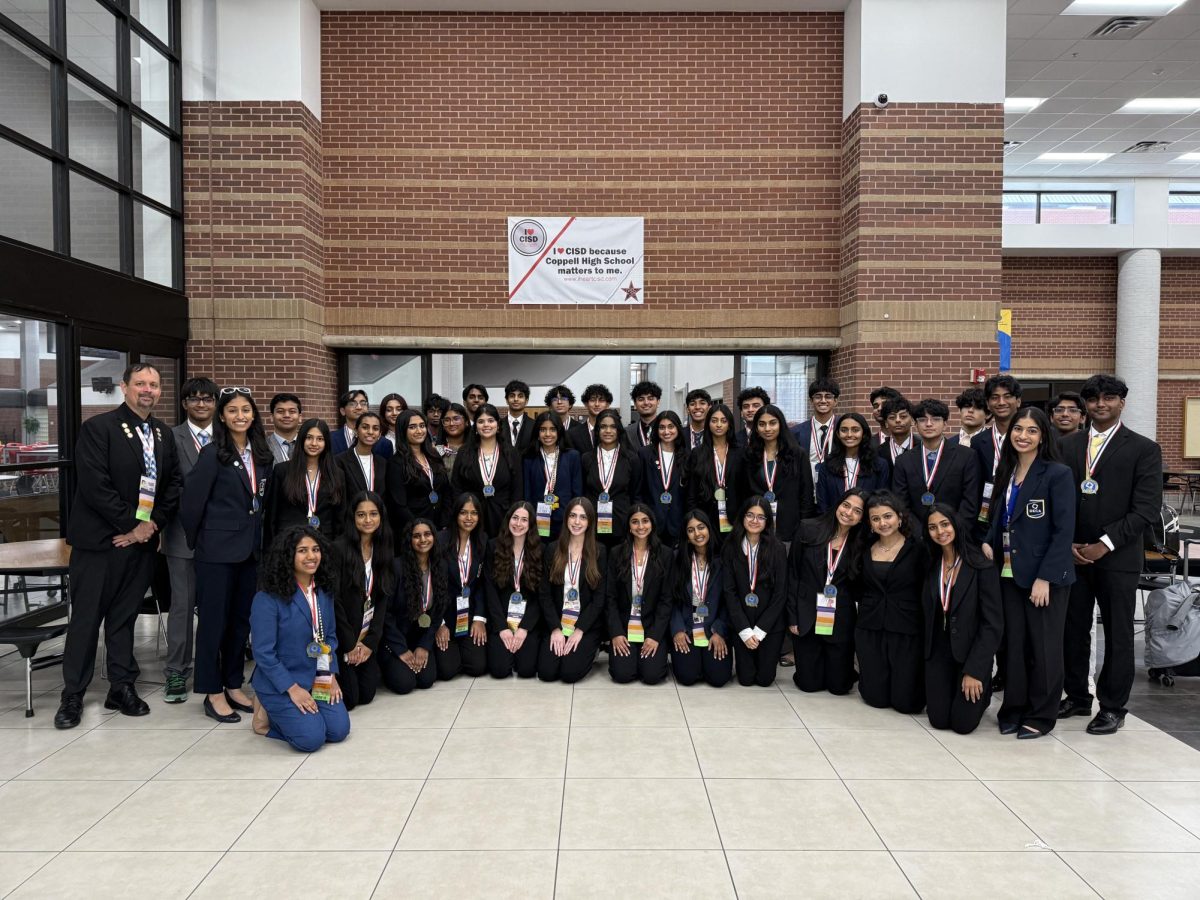
By Jane Kim
Staff Writer
Sarah Meador, the music teacher at Cottonwood Creek Elementary, was an evacuee of Hurricane Katrina. It was her senior year of college at Loyola University New Orleans, and the hurricane hit on the first day of school. “The weekend we were preparing for the new school year, we were watching the weather every day,” Meador said. “We were watching the news broadcast every day, we were tracking the hurricane as it approached New Orleans.”
Meador’s plan was to pack $500 cash and fill up her car; all the while, her dad, in Coppell, was trying to get her on a flight home. Meador had the last flight out of New Orleans to Dallas on American Airlines. Her flight was scheduled to leave at 3 p.m., yet she left her house at 5 a.m. to get to the airport; what should have taken her only 20 minutes took her about an hour and a half. In her backpack, she carried eight bottles of water, food, three days worth of clothes, three pairs of shoes including, her laptop and her cell phone. As Meador drove to the airport,she was glued to the radio. “The officials on the news radio were saying ‘you need to get out now because frankly we don’t have enough body bags for you,’” Meador said. “That was the moment I started panicking.”
When she got to the airport, it was chaos. There were not enough planes for all of the people who had purchased tickets due to the lack of incoming flights. “All the little food places and all the credit card machines were breaking down,” Meador said. “I have learned to always have cash on me in a disaster. Plastic doesn’t mean anything. You can have all the credit cards in the world, but that’s not going to get you that cheese cracker in the vending machine.” Meador boarded a 1:30 p.m. flight to D/FW. When she watched the news about the hurricane, she was devastated to see her college city completely flooded. Two weeks after the hurricane, she and her parents drove back to New Orleans to pick up her car and on the way, they stopped by her house. The streets and the city were still filled with water, so in order for her dad to get to the house, he had to use a canoe he found on the side of the street. In January 2006, Meador returned to New Orleans and college. When Meador returned, many people had evacuated and didn’t come back and everything was scarce.
The hurricane was on Aug. 29, 2005 at 8 a.m. and people from Mississippi, Alabama and Louisiana were scrambling to take cover from the disaster that would shake the nation. What they didn’t know was that Hurricane Katrina was going to be the most destructive and the costliest natural disaster in U.S. history. When the hurricane hit the coast, direct impact broke parts of the levee systems and the water flooded into the streets and the city. The power and water were down and many people had to be housed in the New Orleans Superdome after the flooding destroyed tens of thousands of homes and 1,836 people lost their lives.
As a result, Hurricane Katrina caused one of the largest and most sudden re-locations of people in history. 42,000 people were evacuated to nearby places like Texas and other states from New Orleans, the hardest hit area, in about a week. The same number of people remained; waiting for transportation, missing or stranded on rooftops. In a matter of a couple of days, food and water supplies ran out and the city requested help from the federal government. Aid from various parts of the world came to offer support and many troops attempted to calm down the anarchy that was beginning to occur. What used to be a vibrant, festive, lively city was reduced to rubble, turmoil and utter chaos in a matter of days. Five years ago, New Orleans was a city submerged under more than 12 feet of water.
Even through all this misery and grief, the people of New Orleans have struggled to get back up and they have done it with a smile on their faces and an optimistic mindset. Irwin Thompson, a senior staff photographer for The Dallas Morning News, was on-site at New Orleans during the Hurricane. “There was this one little boy named Jeremiah Ward and he made these makeshift shoes out of cigarette boxes and he tied them together with rubber bands,” Thompson said. “On the box, it said ‘Keep Moving’. It just showed the sense of urgency and improvisation on the part of residents of the historic, low-income area as they escaped from their homes when flood waters abruptly rose.”
That was half a decade ago. The city of New Orleans has still yet to bounce back to what they it was before. Too many vacant lots, too many people unemployed and the oil spill that happened recently have all delayed the rebound of the city. By next year, construction of a stronger, more dependable levee system to protect the city will be completed, as President Barak Obama said during his visit to New Orleans on the 5th anniversary of Katrina. According to FEMA (Federal Emergency Management Agency), they are providing over three billion dollars to help rebuild infrastructure in Mississippi and has provided more than $1.3 billion to help families and individuals’ recover and to begin rebuilding immediately after the disaster.
According to the 2000 census, the last full count of the population in New Orleans before Hurricane Katrina was roughly 484,000 people, but one year after Katrina the population greatly decreased to 208,000. As the years go by, the population figures have been increasing and now, surprisingly New Orleans is one of the nation’s fastest-growing cities. The most recent census suggests that the population is now above 350,000 placing the population at about 70 percent of its size at the start of the decade. New Orleans has gone through a magnificent change and many struggles. Now we can only hope that the whole world can follow in its footsteps on the road to emerging from the water and building from the ground up.








